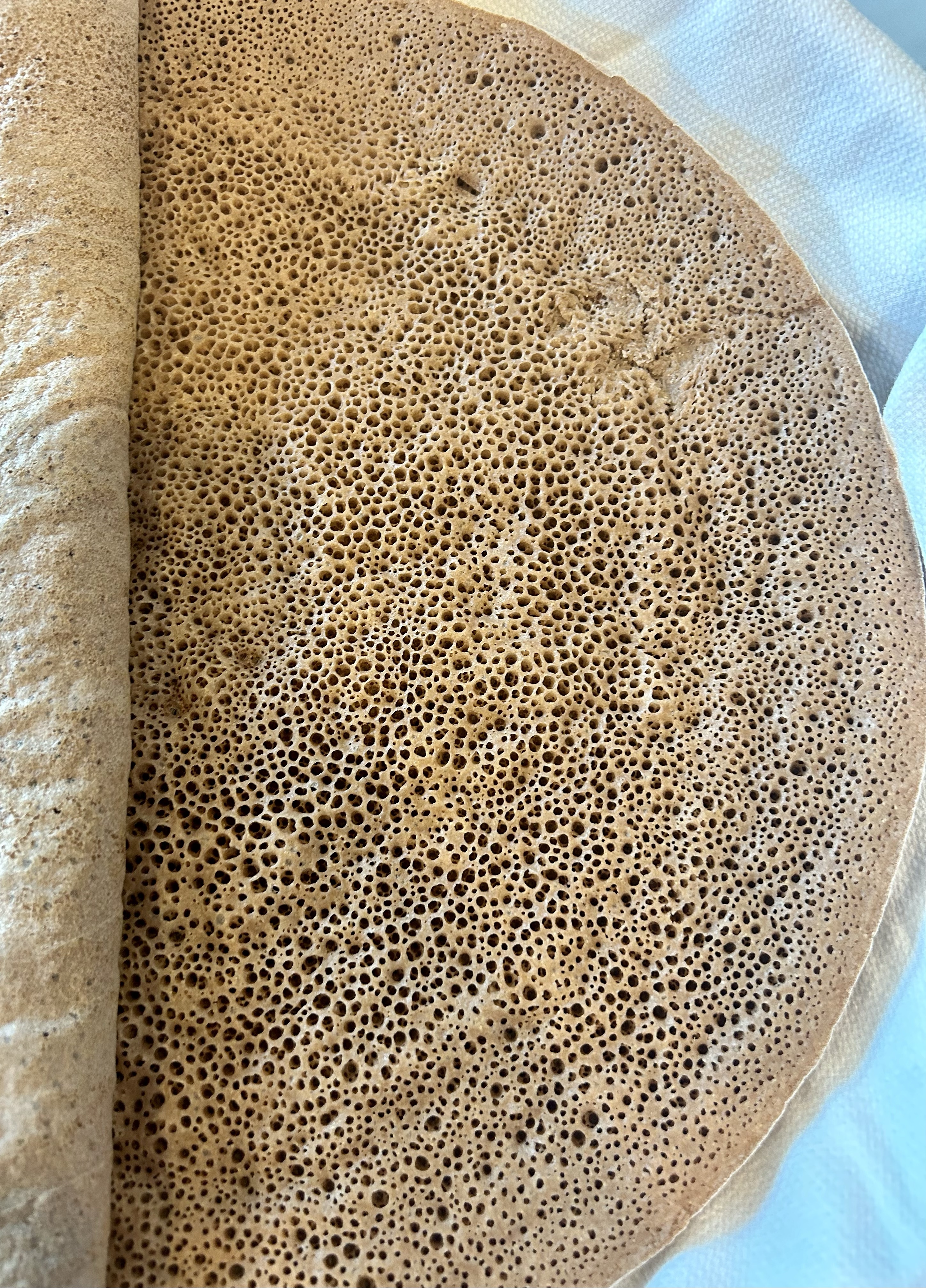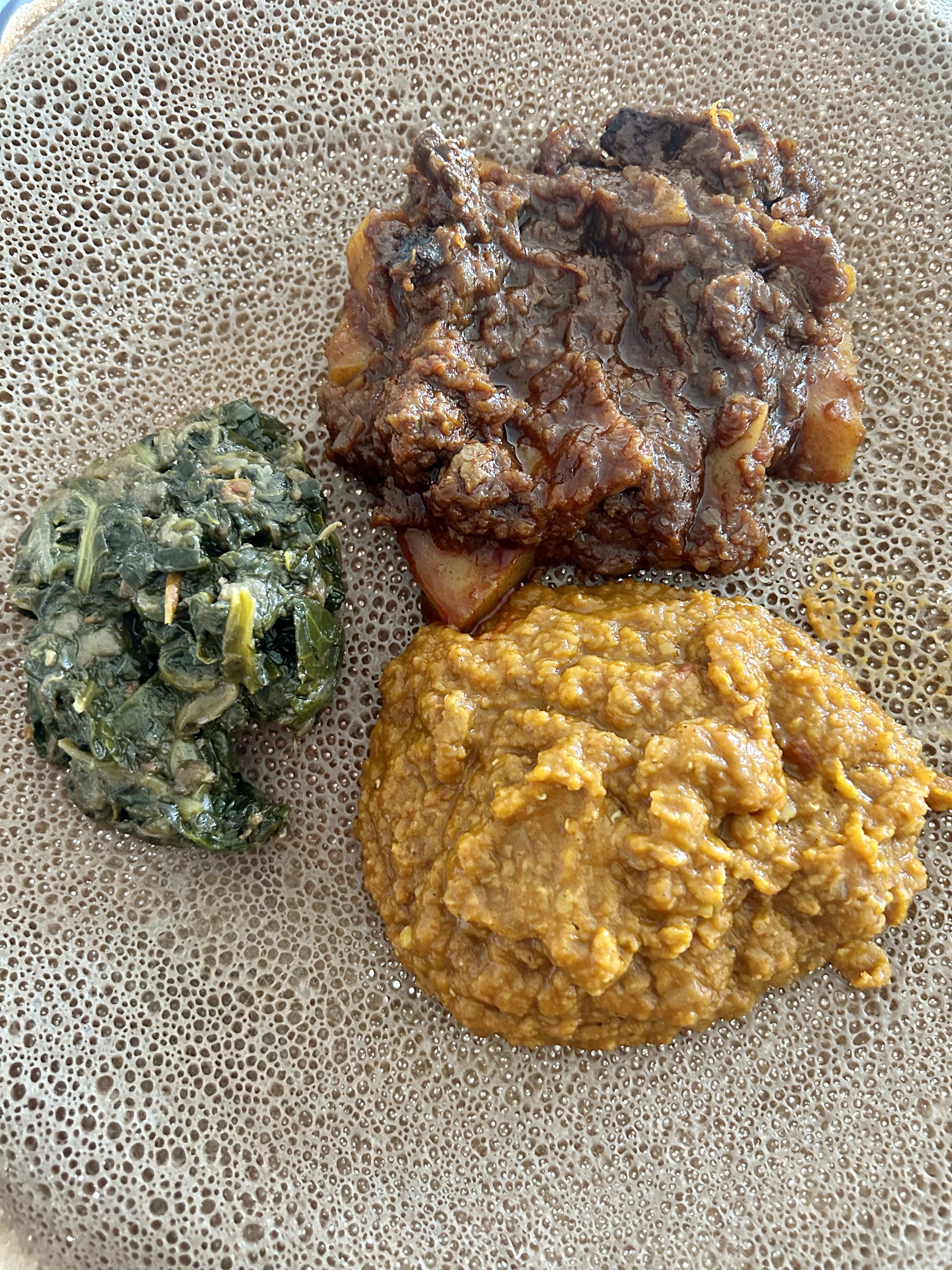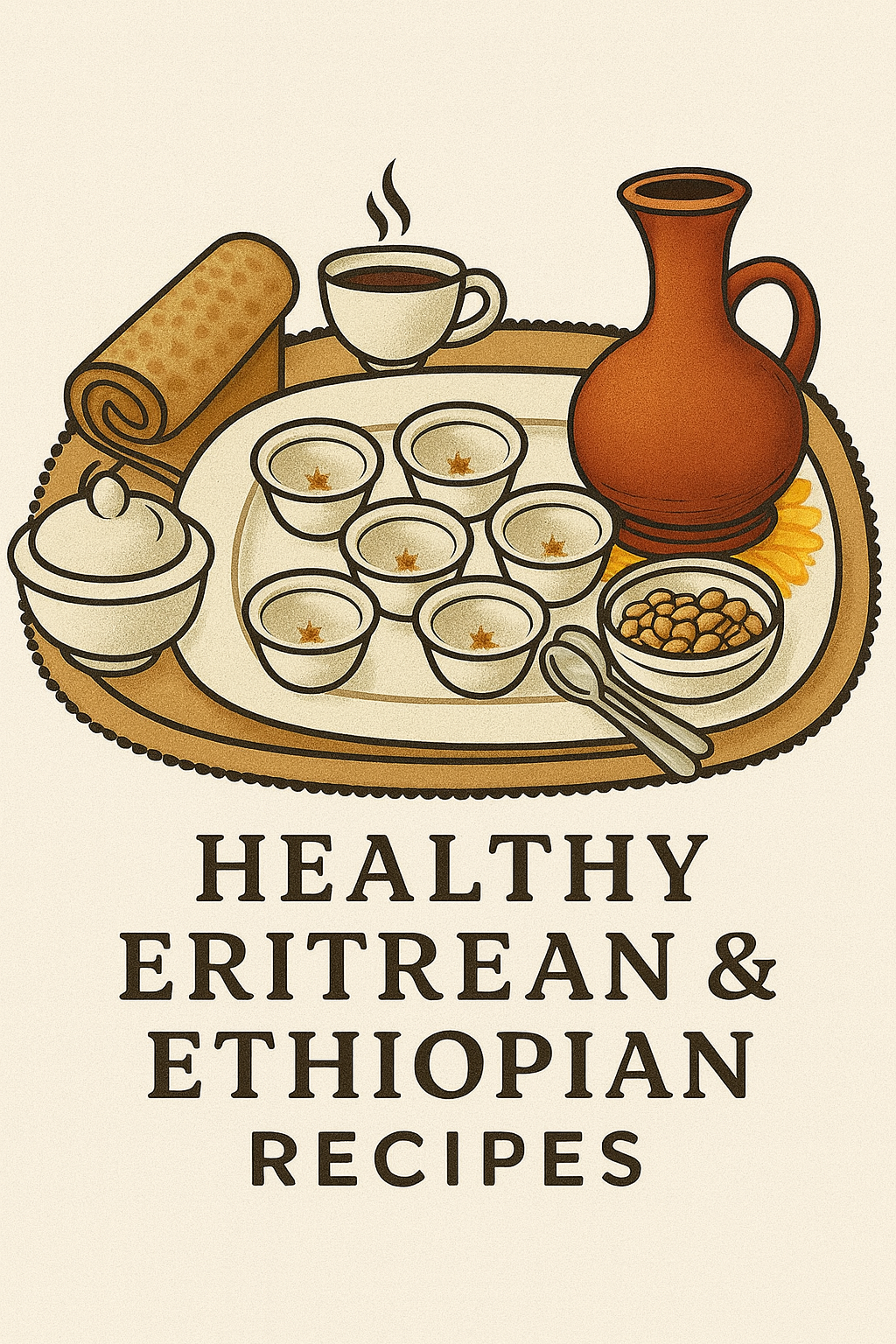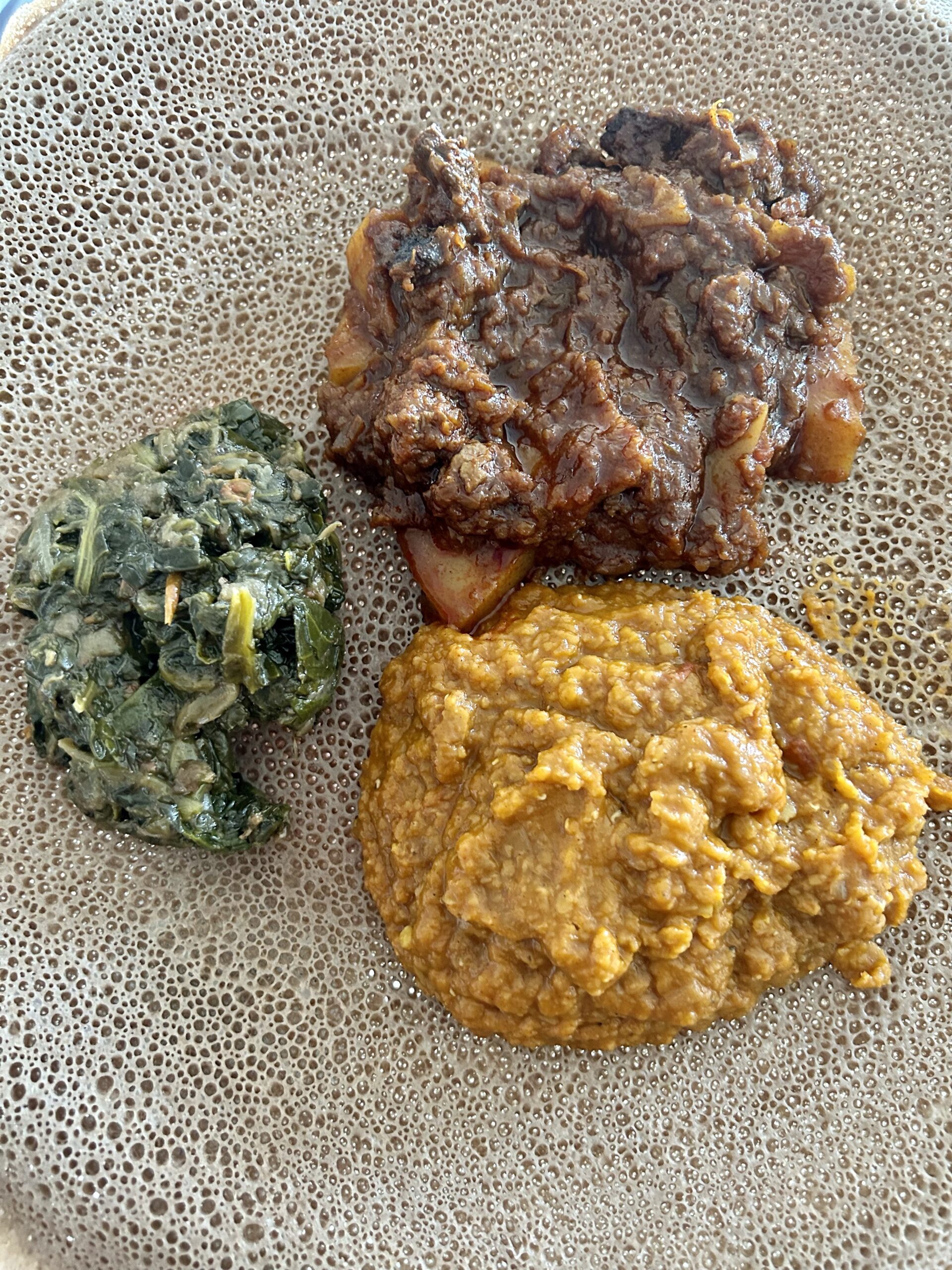Injera እንጀራ (also spelled Enjera) is a traditional flatbread that is a staple food in Eritrean and Ethiopian cuisine. It is a key component of many meals in these countries and is often used as both a serving utensil and an accompaniment to various dishes.
Nutritional COntent
Injera is made from teff flour, which is a type of ancient grain indigenous to the region. Teff is a good source of dietary fiber, protein, iron, calcium, magnesium, zinc, and B vitamins especially B6 and B9 also known as folate. It is also low in fat and gluten free. Due to it’s nutritional content, teff has gained popularity in recent years.
It is important to note that the nutritional content of teff may vary based on factors such as the variety of teff (brown, ivory, white, red), growing conditions, and how it is prepared. Teff can be incorporated into a variety of dishes beyond enjera, such as porridges and baked goods like pancakes, muffins and cakes.
How to make Injera
The process of making enjera involves fermenting teff flour batter, which gives the bread its distinct sour taste and spongy texture. The batter is poured onto a hot circular griddle or pan called mogogo – መጎጎ (in Tigrigna) or mitad ምጣድ (in Amharic) and baked until it forms a large, thin, and porous flatbread. Enjera has a slightly tangy flavor and is known for its unique appearance – a bubbly surface.


In Eritrean and Ethiopian cuisine, enjera is often served with a variety of stews, sauces, and vegetables. Diners tear off pieces of enjera and use them to scoop up the accompanying dishes. It’s an integral part of the communal dining experience and is used as both a utensil and a source of sustenance. The bread’s porous texture allows it to absorb the flavors of the dishes it accompanies.
conclusion
As other types of bread or flatbreads such as tortillas, naan, pita or chapati made from various types of flours (wheat, corn, rice… etc.) are used in other cultures, ; so is the uniqueness of Injera to Eritreans and Ethiopians.


Leave a Reply